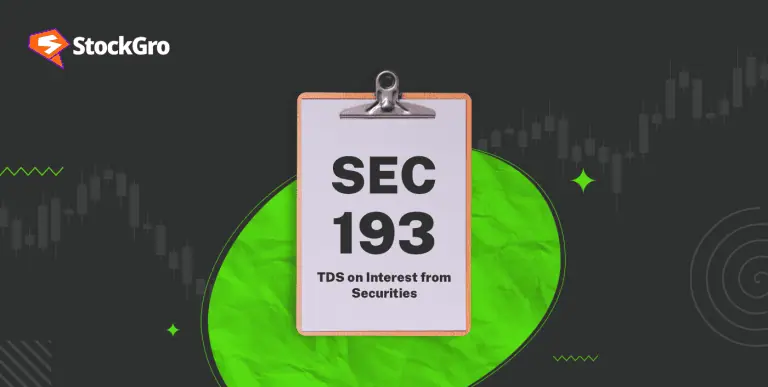
The value of money does not grow on its own, as is no mystery. To raise your savings, you have to save money and invest it wisely. For decades, the stock market has attracted investor attention and has long been one of the most sought-after investment possibilities.
Investing in shares, exchange-traded funds, mutual funds, etc. from your bank account into your trading account is simple. Alternatively, following a profit booking or any other demat account withdrawal, you can move money from your Demat account to a bank account.
This blog will review a detailed step-by-step demat account process for moving money from your demat account.
Also Read: The Importance of a Key Information Memorandum (KIM) in Mutual Funds
Demat account: an overview
Your stocks are housed in an electronic digital vault called a demat account. It’s like a bank locker safeguarding items like cash, jewels, etc. Whether they are shares, bonds, or debentures, whatever securities you buy from the stock market will credit your Demat account. Selling stocks causes the securities to also be deducted from your demat account. Your trading account is deducted when you sell stocks and credited concurrently when you buy equities. A third kind of account is equally crucial for flawless transactions: a bank account.
- Once the buy order carries through, the shares are deposited to your Demat account; concurrently, money is deducted from your trading account from a bank account.
- Should you sell these shares, the money will show up in your trading account. One can easily send money from a trading account to your bank account.
How demat account works
There is no cash in the demat account; it serves as a security storage place. Moving money from the demat account to the bank account becomes a concern when you sell securities, including shares or derivatives and acquire money in place of the transaction. Usually, brokers provide combined demat and trading accounts. The associated trading account is instantly compensated with the sales revenues. After a sale, funds could appear in your trading account in two days; the exchanges settle trades using T+2 days. Once you have the registered bank account, the money in the trading account can be moved fast to it.
How do you migrate funds from your demat account to your bank account?
Though your broker app will affect the precise steps, they are essentially the same.
- Click on the “Funds” section after logging into your trading account. Certain apps might have a “Accounts” section instead of a “Funds” one.
- Once you’re in the “Funds” window, you can add money or withdraw it.
- Under “withdraw,” move money from the demat account to the bank account. Alternatively, add money to your trading account under “add funds” to buy new stocks.
- The brokerage will ask you how much you wish to transfer and show you details, such as the total amount in your trading account that may be moved when you select the “Withdraw” option. You simply have to move the money you get from selling particular stocks. Many individuals mistake the transferable amount for the total amount shown on the home page.
- Most brokerages show the overall limit on the home page and offer some trading leverage. The maximum amount of leverage is determined by the amount of money you deposit into the trading account and the securities you own in the Demat account. The transferable amounts and the overall money limit are not the same.
- The amount of money you wish to withdraw must be entered on this page. You must select the bank account in which you wish to receive the funds if the trading account is connected to more than one bank account. Entering the trading password will initiate the transfer after inputting the required data. The time it takes for the money to appear in your bank account might range from a few minutes to several hours, depending on your transfer method.
You can deposit funds into your bank account by following these instructions. However, you should also be aware of the following before moving money from a Demat account to a bank account.
Also Read: Understanding Cut-Off Prices in IPO Applications
Factors to consider during fund transferring
As we know, moving money and securities has become rapid and hassle-free. However, you need to know several facts to better grasp demat and trading accounts.
- Direct money moves from your Demat account to your bank account are not possible. Funds move from a trading account to your bank account; brokerage companies allow traders to amplify their transactions by lending money to trade in the market.
- You can easily sell securities you own from the stock market. It’s therefore advisable to avoid confusing your holding in your trading account with the fund limit.
- Any payment method may be used, including bank transfer, Unified Payments Interface (UPI), and other forms as advised on your broker portal.
Your trading account can show a balance before you make any trade or open stock market transaction, which would not enable transfers. Your position is the reason this happens. Liquidating any leverage or a pledging stake can present challenges.
Also Read: How to Locate IPO Mandates in GPAY, PhonePe, Paytm, and BHIM
Conclusion
Improved online trading allows consumers to sell their holdings, move money, and seize several trading chances. You might start working on a varied financial portfolio by trading several assets. Additionally, the demat account process of withdrawal of your funds is fairly simple as well.
FAQs
1. When can we withdraw money from a Demat account?
You may withdraw the stock trading earnings from sold or terminated shares or positions only once the trades are finalized. In India, T is the trading day and the settlement cycle for traded instruments uses the T+1 day rule. The money thus becomes accessible for demat account withdrawal on the day following the trade date (T+1 day). One should be aware that weekends or holidays could cause delays in the settling procedure.
2. Can you transfer money from Stocks to a bank account?
Stockbrokers present a simple technique for moving money from your stock account to a bank account. Although bank transfers are the most often used approach, depending on your broker, other solutions, including electronic wallets, could also be accessible. To start a transfer, just access your broker’s platform, choose the demat account withdrawal option, and choose your chosen method to guarantee a seamless transaction.
3. Is there a charge to transfer from Demat to another?
Yes, moving shares from one Demat account to another results in charges. Use the DIS Annexure form (PDF) for more than five securities. Each security transfer charge is ₹25, plus 18% GST. For a single transaction, for instance, moving 10 shares of HDFC, 5 shares of Reliance, and 2 shares of Infosys will run ₹75 plus GST. Make sure you know the relevant fees in advance.
4. Can I transfer money from Zerodha to my bank account?
Using the instant demat account withdrawal tool, Zerodha customers can move money to their main bank account. Users of this choice can quickly access their money free of extra fees. The money will be credited to your registered bank account in minutes after navigating to the Zerodha website’s withdrawal area and choosing the instant withdrawal option.
5. Do I have to pay tax if the money is in a Demat account?
The kind of instruments a Demat account holds determines the tax responsibility for money stored there. Interest gained on some government bonds and assets kept in a Demat account is tax-free. However, based on your relevant tax slab, interest on other debt instruments, such as bonds or debentures, is taxable and included in your income. Consult tax rules always for clarity.

